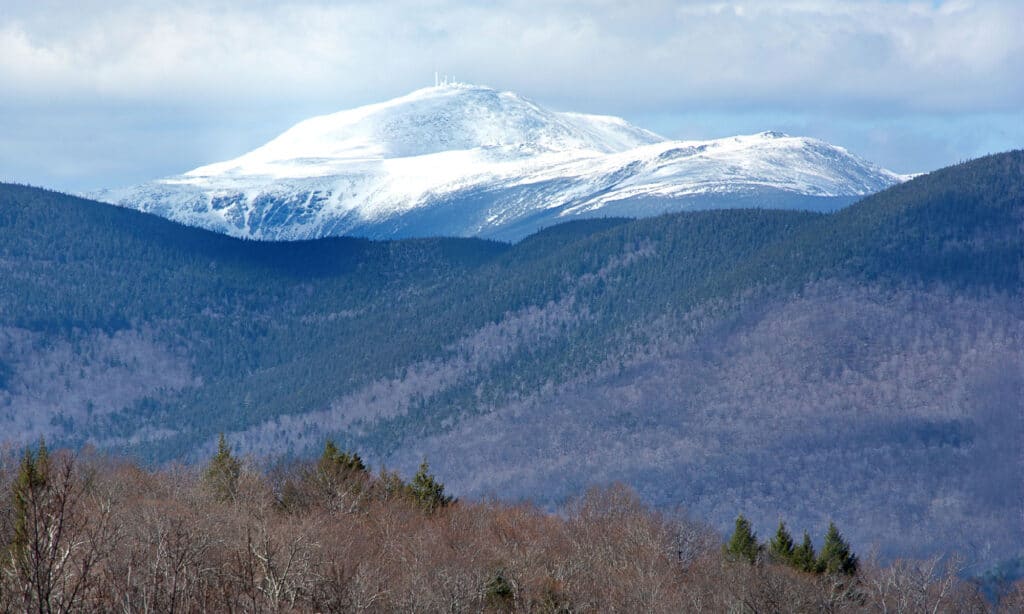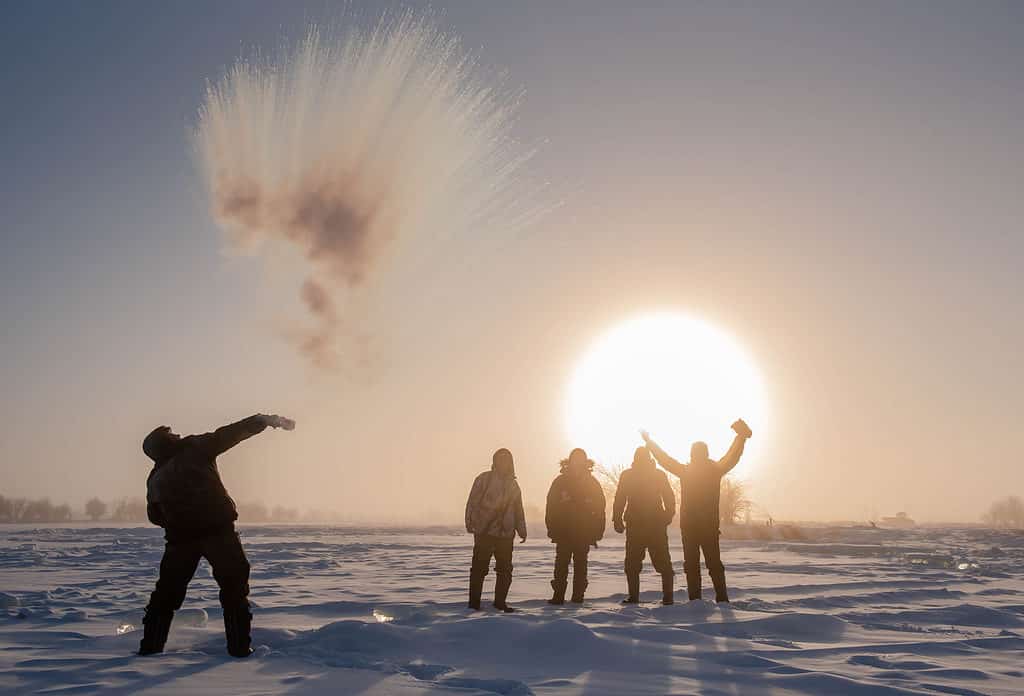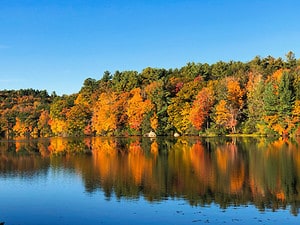There is a place in the United States that has been given a rather ominous title. It has been dubbed “Home of the World’s Worst Weather.” That place is New Hampshire’s Mt. Washington, where boiling water can instantly turn to snow.

Winter covers Mt. Washington in ice and snow for months each year.
©iStock.com/Gerald G Gantar
More than a quarter million people visit the summit of this mountain in the Presidential Range every summer. However, even summer weather on this mountain can be treacherous and highly unpredictable. Rescue missions for stranded or injured hikers are fairly common during the summer season.
But in the winter, Mt. Washington transforms into one of the most foreboding places on the planet. The summit is covered in snow and ice. Hurricane-force winds and sub-zero temperatures are common.
The mountain flora reflects this extreme weather. Mt. Washington has an elevation of 6,288 feet, but the treeline sits at approximately 4,400 feet. And at the treeline, all the foliage of the trees only grows on the leeward side because of the extreme winter winds that almost always blow from the west. Above the treeline, there is almost no soil. It’s all exposed granite due to the severity of the winter winds.

Mt. Washington is well-known as the “Home of the World’s Worst Weather.”
©iStock.com/mountainguy
The “Home of the World’s Worst Weather” honorific bestowed on this mountain is not hyperbole. It is quite true, and it has never been more fitting than it was on the first weekend of February 2023.
A Frigid Record
On the night of February 3-4, the temperature at Mt. Washington’s summit dropped to a frigid -46°F. The arctic storm that ushered in these cutting temperatures also brought winds that gusted to 127 mph, very close to the wind speeds of a Category 4 hurricane. The polar temperatures combined with the extreme winds dropped the windchill at the mountain’s summit to an astonishing -108°F.
The original formula for calculating wind chill was developed in 1945. It was later refined for greater accuracy in the 1970s. Since the beginning of recorded wind chill factors, there have been three events of wind chills lower than -100°F in the U.S. All three of them occurred at the peak of Mt. Washington. The event of February 2023 was the lowest of them all. In fact, it may be the lowest-ever wind chill record on earth. There have likely been colder windchills in Antarctica, but they have not been officially documented.
Weird Things Happen When It’s This Cold!
When temperatures reach such frigorific proportions, bizarre and almost other-worldly things can begin to happen. One example was demonstrated by researchers atop Mt. Washington while the summit was firmly within winter’s icy grip.
The Mount Washington Observatory at the peak of the mountain is staffed 24 hours a day, 365 days a year, just as it has been since its founding in 1932. The Observatory’s researchers are always on the top of the mountain, even during the absolute worst Mt. Washington winters.
One of those researchers gave the world a demonstration of what can happen when winter temperatures reach such extreme lows. In a video posted on the organization’s YouTube channel, an Observatory staff member throws a pitcher of 212°F water into the frigid air. Amazingly, that boiling water turns to snow immediately. As we said, weird things happen when the weather is this cold!
How Does This Happen?
Extremely cold air is exceptionally dense. This means it has a very low capacity to hold water vapor molecules. Boiling water, on the other hand, is emitting water vapor quickly through steam. When the boiling water is thrown into the dense, cold air, there is essentially no room for that water vapor. The vapor precipitates out by adhering to microscopic particles in the air and forming crystals. This is how snowflakes are formed, and it is why boiling water can immediately turn into snow at extremely low temperatures.
This is an experiment you can do at home, provided that you live in a wintry region that is experiencing an extreme cold weather event. Temperatures of 25°F can give you a bit of this effect, but it likely won’t be a complete water-to-snow conversion. Your chances of seeing this phenomenon go up significantly at -10 °F, but the perfect temperature is -30 °F or below.

It is amazing, but potentially dangerous, to throw boiling water into the winter air. Be careful!
©Mikhail Cheremkin/Shutterstock.com
We must issue a word of caution, though. Boiling water is hazardous. Scaldings have occurred while people have attempted this experiment, so if you want to try it, be very careful.
Up Next:
- Discover New Hampshire’s -100 Degree Ice Age Happening Right Now
- First Snow in New Hampshire: The Earliest & Latest First Snows on Record
- Discover the Highest Point in New Hampshire
- Ranked: The Oldest Mountain Ranges in the United States
- Watch These Trains Turn into Snow Plows in Hilarious Compilation Video
The photo featured at the top of this post is © Belovodchenko Anton/Shutterstock.com
Thank you for reading! Have some feedback for us? Contact the AZ Animals editorial team.






